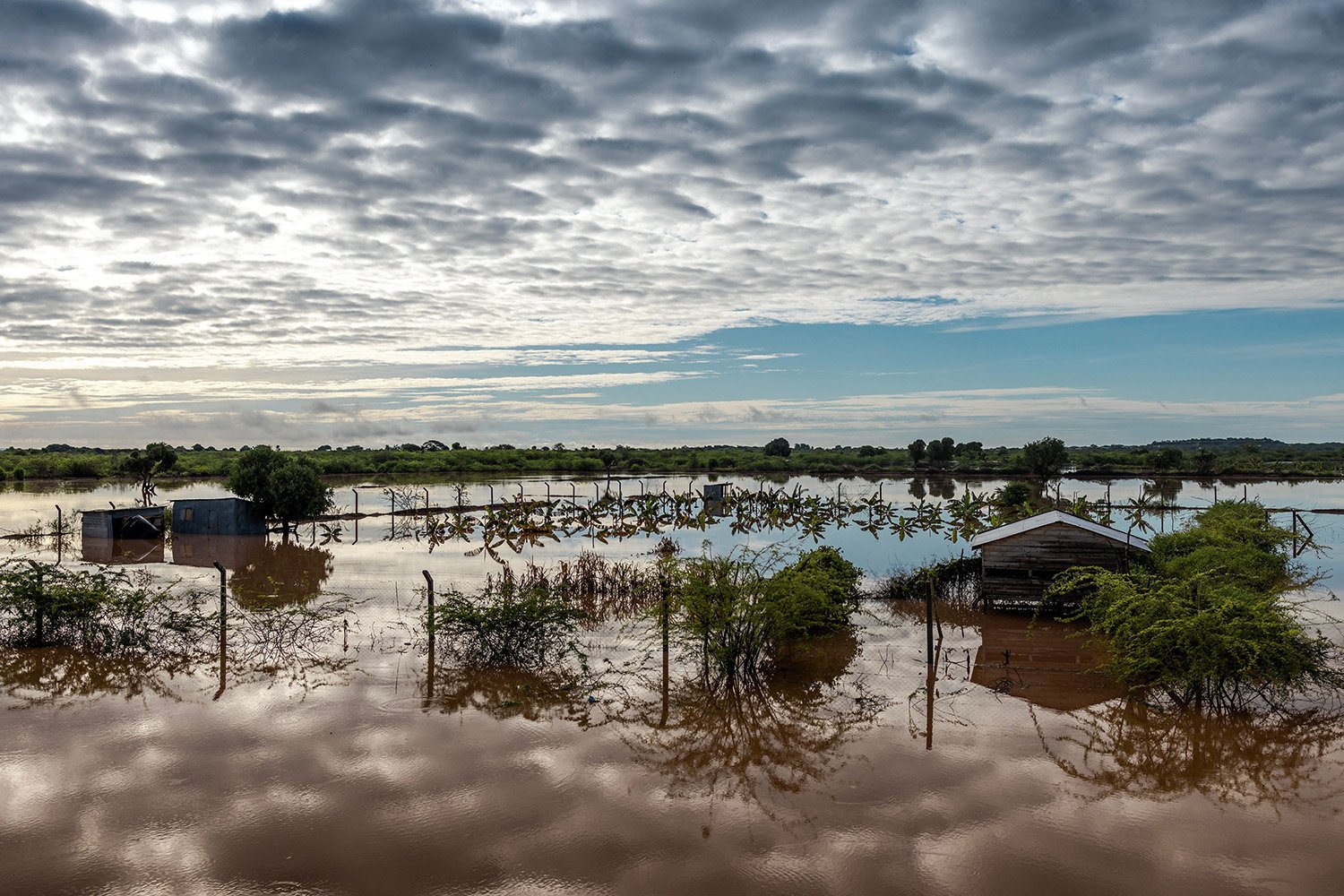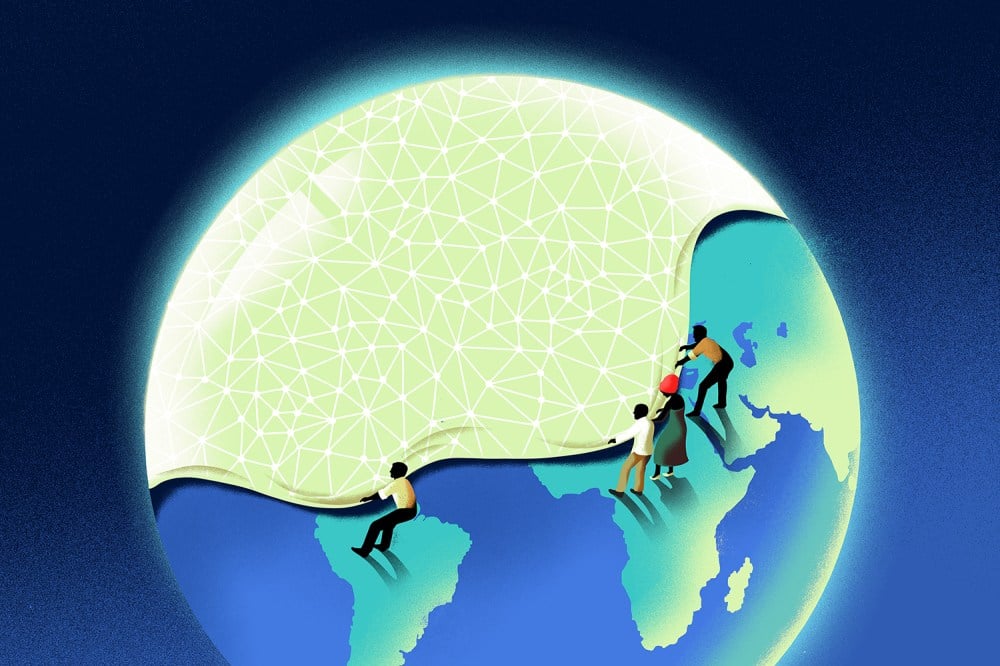The artificial intelligence industry seems poised for a crash. Spending on AI infrastructure is expected to hit $2.8 trillion by 2029, and it is hard to imagine how any potential financial returns can justify this as a rational investment decision. Analysts across Wall Street, the International Monetary Fund (IMF), and the Bank of England are already voicing their concerns.
One of the biggest challenges in getting people to pay for the industry’s products is that there are not enough use cases—the term most frequently offered, which means value-creating jobs done by AI—to justify the expense. The irony is that while use cases for big AI, built for power, are hard to find, there is no shortage of use cases for simpler forms of AI—what I call “small” AI—which could be deployed for narrower purposes across the developing world. Not only are the use cases plentiful, the need for solutions to long-standing problems is urgent, and the impact could be felt by 6.7 billion people who populate low- and middle-income countries.
Getting the AI industry away from its singular obsession with building ever more powerful large language models will not be easy. The goal of OpenAI’s CEO, Sam Altman, is artificial general intelligence (AGI), a form of superintelligence that will require adjusting hundreds of billions of parameters in AI models for months and maybe years. The repeated computations required involve immense processing power and high-performance computing that, in turn, consume massive amounts of electricity. Altman has reportedly signed an agreement with Microsoft that says OpenAI will only have achieved AGI when its AI delivers $100 billion or more in profits. Given that OpenAI’s revenue target for 2025 is $13 billion against $1 trillion of investment, achieving AGI will take time.
As fears of an AI bubble grow, and as the U.S. and global economies have become a giant bet on AI, it is a good time to ask: Can the technology be directed toward more immediate needs?
Across this big AI ecosystem, the staggering pace of investments—at the equivalent of $1,800 per American—now add up to 2 percent of the United States’ GDP and have artificially boosted GDP growth by 0.7 percent. OpenAI alone has locked in $1 trillion in deals this year, giving it the power to harness the equivalent of 20 nuclear reactors. This kind of spending is problematic beyond the missing use cases: Uncontrolled AI development comes with many unresolved risks; the AI boom has taken over the critical U.S. venture capital sector, crowding out a wider cross-section of innovations; and it is masking serious vulnerabilities in the overall economy.
To get a sense of why big AI appears to be an investment in too much power with too little purpose, consider OpenAI’s own data, which reveals that people are using the product mostly as a personal assistant for simple tasks. The uses of AI today are primarily in areas where we have substitutes and other tools at our disposal. Also, the users are mostly in rich countries where affordable alternatives are available. The customers that could justify the massive spending would be businesses, but these businesses are also hard-pressed to find use cases: A 2025 MIT report found that 95 percent of surveyed businesses failed to find any financial return on their AI initiatives.
In a hunt for use cases, consider a change in perspective, away from the parts of the world where AI use is currently concentrated to where usage is still low, in the developing world. While trust in AI is low and declining in rich countries, there is a far greater level of trust in AI in poorer countries For example, in Nigeria and India, 76 and 77 percent of people trust AI, respectively, compared to Canada and the United States, where trust sits at around 30 percent.
The good news is that there is no shortage of use cases in poorer countries, with the low rates of use due to gaps in access to relevant infrastructure and awareness.
The range of possible applications is wide: crop disease detection tools, health care chatbots, predictive maintenance of essential infrastructure such as water pumps, credit scoring systems that enable financial inclusion for those without formal credit histories, flood forecasting for climate-vulnerable populations, among many others. Besides the breadth of applications, the scale of these problems is massive. Seventy percent of the world’s food is produced by smallholder farmers, of which there are approximately 570 million globally. These farmers are vulnerable to pests that destroy up to 40 percent of crops, causing a loss of $220 billion each year. Also consider the 4.5 billion people who aren’t fully covered by essential health services, the 1.4 billion without access to a formal bank account, the 739 million adults who cannot read or write, the 250 million children who fail to get basic literacy skills, or the 1.8 billion people who live with high flood risk.
Consider two examples to see how the right kind of AI can be a game-changer. An app called Nuru, developed by Penn State University, combines computer vision and machine learning to diagnose a crop disease based on an image captured by a farmer’s phone, and then it offers a treatment recommendation by scanning images of diseased plants. Nuru can diagnose cassava diseases with 65 percent accuracy, beating agricultural extension agents at 40-58 percent and farmers themselves at 18-31 percent. The projected economic value of such apps is significant: more than $6 billion in added revenues annually across just seven sub-Saharan African countries, affecting 14 million farmers. Nevertheless, use of the app has been low because of barriers such as farmer awareness, the availability of smartphones, and inadequate access to electricity and the internet—even if constant access to either is not needed for the app to function.

At a different end of the spectrum of applications—and involving a big AI player—there’s a flood forecasting tool, Flood Hub, developed by Google that covers areas in which a total of 460 million people live. It uses the company’s formidable global data to train a predictive AI model that leverages long short-term memory networks to anticipate floods even in regions lacking proper measurement systems. With steady improvements in incorporating AI and data, such tools have become better. Yet, they must overcome several challenges, such as the quality of data from multiple local sources, the fact that flood risk is appearing in new areas due to the climate crisis, the lack of trust in technologies among local authorities, and difficulties in getting information out to affected populations.
Deploying such small AI requires several changes in approach. First, the industry needs to reset its priorities from focusing solely on building general intelligence technology with unclear benefits to instead asking how the technology can be made good enough to solve some the most widely felt and most stubborn problems worldwide. This usually entails a timely injection of specialized knowledge that translates into a meaningful jump in productivity or human well-being in information-starved contexts, where productivity and the state of well-being are low. There are few substitutes for the kind of knowledge that AI can contribute, making such environments a vast addressable market in social terms and—with the right business models—in economic terms, as well.
Second, to function in such contexts, AI must contend with many limitations endemic to the developing world: narrow datasets rather than comprehensive ones covering every topic; models that must function with far fewer parameters; and computation that can be done on users’ devices or close to the edge of the network, rather than having to rely on sophisticated AI infrastructure.
Not only does AI have to be lighter in these applications, but the minimum requirements are very different as the AI needs to be good enough for each application. Some have minimal needs, especially if they are based on simple text-messaging solutions and do not require constant connections to a grid or an online network. Others are more demanding, requiring access to bigger and better datasets (e.g. for flood forecasting), or benefiting from ChatGPT-like tools (e.g. education and skill-building), or requiring greater accuracy (e.g. a health care chatbot). Many of these applications can ride on simple models and narrower datasets, while others could benefit from having access to technologies being developed by the big AI industry, from the more comprehensive large language models at OpenAI to small language models trained on narrow datasets developed by companies like Salesforce, or the on-device AI computation being pursued by companies like Apple.
Finally, the coalition that must come together to facilitate small AI is different from the trillion-dollar deals that OpenAI has locked in. Collaborations need to extend beyond the major tech players to include entrepreneurs with local knowledge, governments, community groups, nongovernmental organizations, and multilateral institutions, such as the World Bank, the IMF, and United Nations organizations. The success of companies such as M-KOPA, which pioneered pay-as-you-go revenue models in sub-Saharan Africa, suggests that there is potential for such business models.
AI promises revolutionary change—and history shows that revolutions take time. In the interim, there is a risk that investors lose confidence and, as more of the AI buildout is being funded by debt, it might cause a bubble nurtured by large amounts of debt to burst. Small AI applications, rather than the unclear benefits of big AI, have a greater chance of delivering impact—and doing so earlier.
Investments in AI good enough for many jobs that can be done right now would build trust and confidence in the larger AI project while helping lift populations and economies around the world out of poverty.
The post How to Make AI More Useful appeared first on Foreign Policy.




